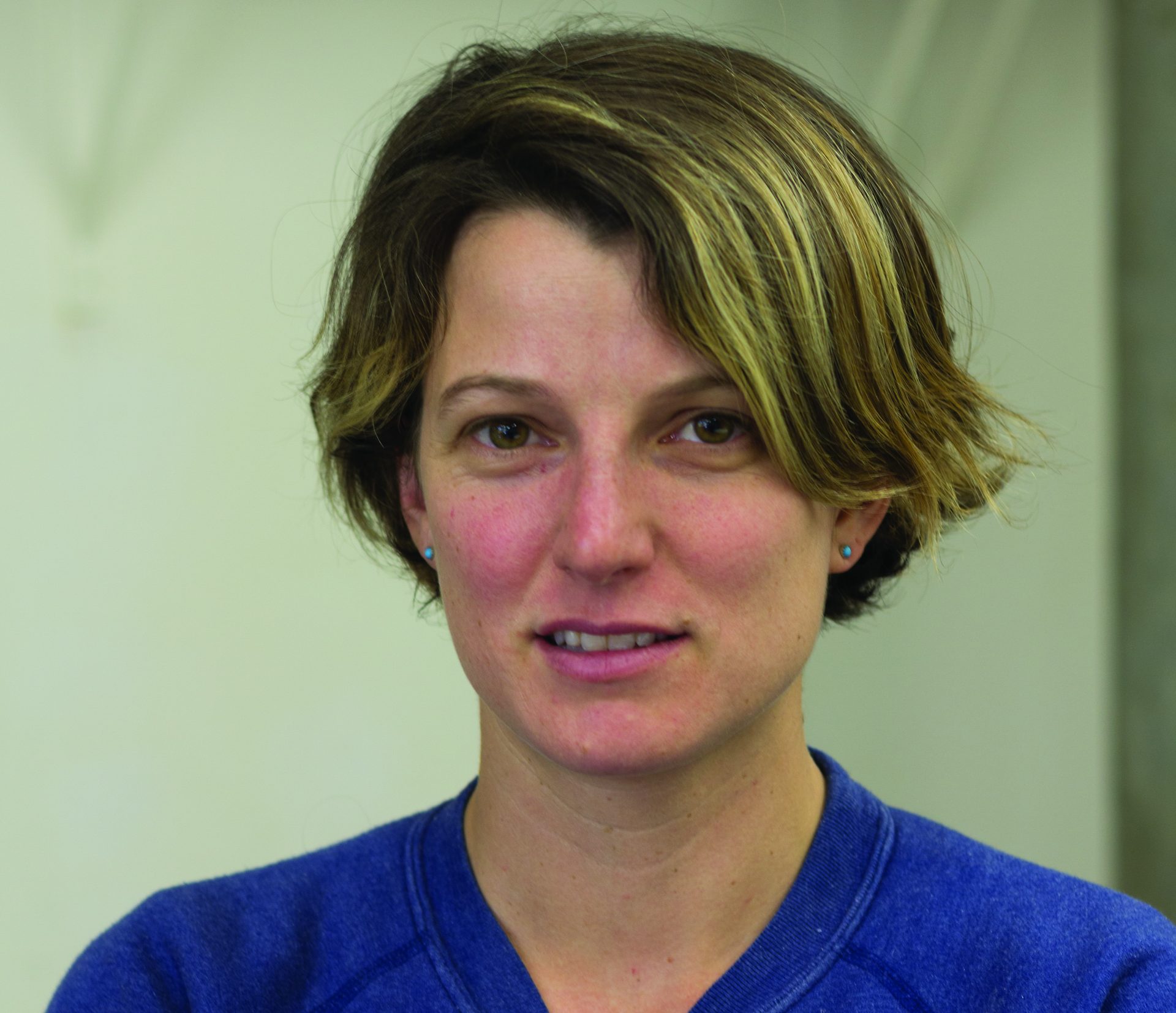
By Hanna Merzbach///Staff Writer
Cara Levine, a former UC Berkeley and California College of the Arts (CCA) professor, is a recent addition to our sculpture department. She was called upon to fill the Sculpture 1 teaching position this fall term and the Sculpture 2 and 3 position in the spring.
Teaching Sculpture 1, Levine’s students experience in sculpting varies; many are taking the class as a prerequisite to be art majors, however, many are taking the class for an elective credit and, therefore, have little to no experience in sculpting. For this reason, Levine began the school year by giving her students an assignment designed to help them find what they are interested in.
“There are sculptural possibilities everywhere. I am trying to enable my students to see their surroundings like this,” Levine said.
Each of her two sculpture classes has a designated Instagram account, one entitled “One Minute Sculptures” and the other “Two Minute Sculptures.” Students have access to their class’s account, where they are required to post one picture of a self-created sculpture each week.
The term “One Minute Sculptures” was coined by Austrian artist Erwin Wurm who applies the term to his pieces that utilize the human body with household items — a man with dry-erase markers sticking out of his nostrils, a woman balancing a waste basket on her head, or two men trapped in a turtleneck sweater. The pieces can only exist for a minute before gravity kicks in and everything collapses.
In Wurm’s version of the assignment, he would give participants, the observers at galleries, a drawing of what the sculpture was intended to look like. “There would be a pile of oranges and on the drawing it had a figure lying on its back on top of the oranges. When you approach this pile of oranges and the drawing, you are instructed to become the sculpture. Once you are in that formation, the sculpture is created,” Levine said.
Unlike Wurm, Levine gives her students full creative freedom. At the end of the term, she will sit down with her students and discuss the patterns in the body of works they have created. She hopes to help them hone in on their skills.
“It helps you see things that you wouldn’t necessarily see unless you were thinking in an artistic kind of format. As you do more and more of them, you see more things in nature and your everyday life that could either be created into a sculpture or are already beautiful by themselves,” Freshman Malena Evig said, who is considering majoring in anthropology with a minor in art.
This assignment does not specifically prepare the students for any other project, but helps them see the artistic potential in the environment around them. Currently, the students are using their woodshop skills to make 3D lifesize puzzles of animals. In order to maximize time and skills, they were places in groups of eight.
“Scheduling has definitely been the biggest issue for me, I’ve got a lot to juggle with a job off campus, two on campus, overloading classes, and living off campus. Finding time to work with everyone has been a challenge,” Junior Beija Flor said, a double major in physics and studio art.
Following this project, the students will learn to work with plaster and textiles. They will then embark on a partner project creating a sculpture that is only completed by use. The term will culminate with the “Not So-Self-Portrait,” a piece designed to be contradictory to the traditional self portrait.
“This portrait asks you to look at yourself closely, but through action, desire, interest, and form. You cannot portray your face (alone). Focus on one part of you body, an action that it performs, what it looks like on a micro/macro scale, or any way that this part of you holds interest to you and investigate,” Levine said in her syllabus’ description of the project.
Although Levine admits to gain immensely from teaching, she is an artist first. She defines herself as a sculptor, however, primarily makes videos and performance art. She has been trained to work with wood, steel, concrete and textiles.
“I often make objects that go into my videos as props. And I use my body in a lot in my work. My work is a lot about my own physical understanding of space, emotional and physical space, the body interacting with the landscape. It is somewhere between fantasy and reality,” Levine said.
Levine’s work has been shown in galleries including the Wattis Center for Contemporary Art in San Francisco, The Orange County Center for Contemporary Art, and The Center for Contemporary Art, Tel Aviv. Recently, Levine spent time doing an artist residency in Iceland. There, she did work involving her journey into healing from chronic migraines.
Later this month, Levine has a show coming up in Oakland, Calif. and in Portland, juggling both her teaching and artistic career. This year, Levine hopes to be able to share her experience and unique perspective with her students.
Subscribe to the Mossy Log Newsletter
Stay up to date with the goings-on at Lewis & Clark! Get the top stories or your favorite section delivered to your inbox whenever we release a new issue.

Leave a Reply